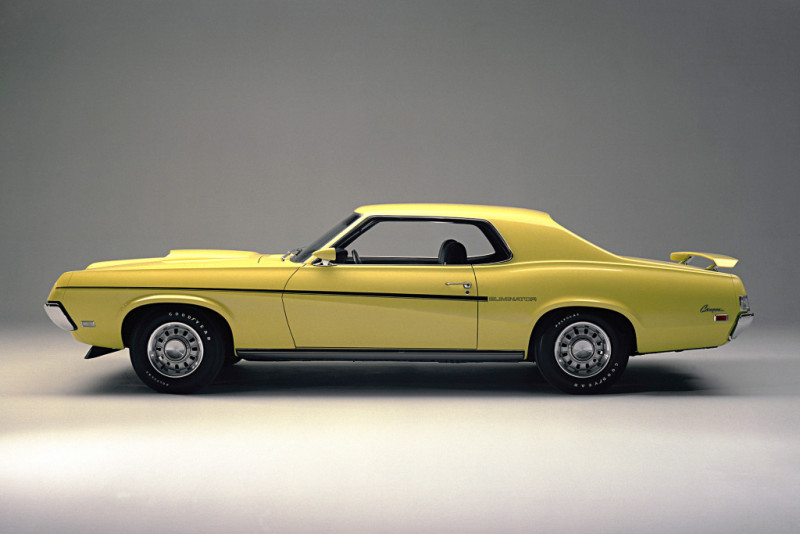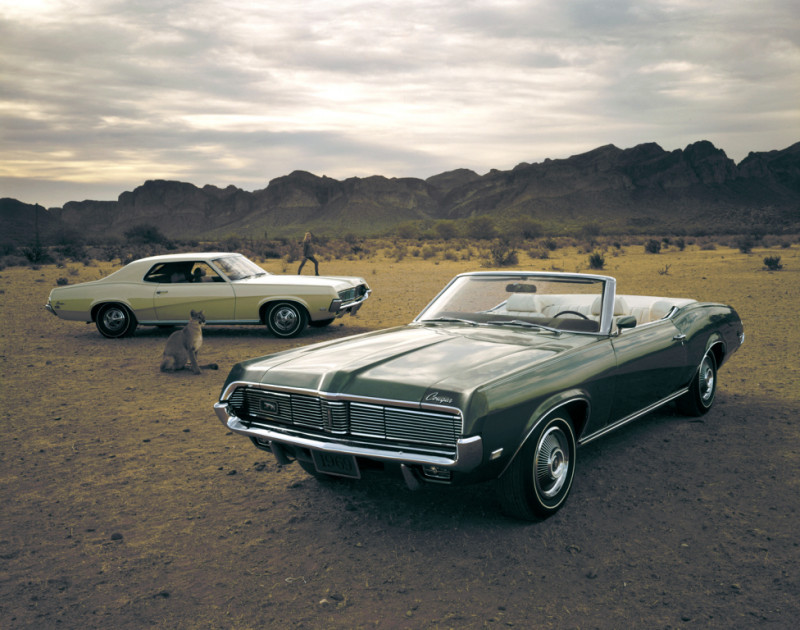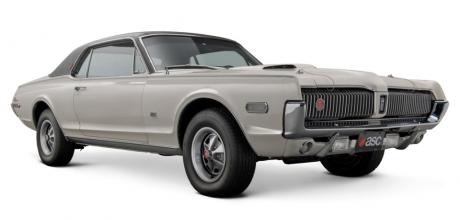1967 Mercury Cougar XR-7 G
A ‘posh’ Mustang? It could only be the Mercury Cougar…
Lincoln-Mercury got in on the pony car act a couple of years after the Mustang launched with the 1967 Mercury Cougar. In its initial guise it was assembled at two of Ford’s factories, the Dearborn Assembly Plant (DAP) up to 1973, within the huge Ford Rouge Centre housing six build facilities and on the West Coast at the San Jose Assembly Plant in Milpitas, California until 1970. Thereafter, Cougar production switched to the Lorain Assembly Plant (LAP) in Ohio until 1997. The brand-new 1967 Mercury Cougar was unveiled to the public on September 30, 1966 and within days Motor Trend magazine made it their Car of the Year.

1969 Mercury Cougar Eliminator
The Cougar was really the product of a marriage of two of its cars; firstly the Thunderbird, with its image, style and prestige and secondly the Mustang, with its two-door ‘pony car’ sporty persona. However, the Cougar suggested luxury and Mercury made certain of that kudos with an increased price tag over the Mustang, something that never put prospective buyers off. As the Cougar entered the pony car market, Ford’s divisional general manager Frank Zimmerman remarked: “No stable has ever had two active Kentucky winners.” He was correct and the car-buying public loved the first- generation Cougars.
The research and development folks code-named the Cougar the T-7. The wheelbase measured 111 inches, three inches longer than the Mustang’s and overall length was nearly seven inches more, while it weighed 200lb more. As Cougar fever gripped the United States, one dealer in Monterey, California sold 29 of his allotted 30 models in the first month alone. The automotive media of the time joined in the hoopla, calling the car “America’s first luxury sports-car at a popular price”.

Firstly there were just two Cougar models available: the ‘base’ car and the XR-7 (allegedly the ‘seven’ related to its R&D times and the XR supposedly stood for ‘extra ritzy’!). All the cars had V8 power, ranging from 289cu in derivatives, up to the 390cu in big blocks. For the performance buffs a GT package could be had, which included as standard the 390cu in engine, with special lifters, cam, Holley carb, choice of three- or four-speed synchro manual gearboxes or the Merc-O-Matic auto. These were quick ‘street’ applications that helped the Cougar win over the ‘black top’ race crowd.
Although the ’67 Cougar was known for its option-laden packages, body style wise you had just the one choice: a two-door hardtop or nothing, no fastback and definitely no convertible. The official reason was that quality control could be more easily monitored with just the one body style, but the real reason was that the company had spent over its $40 million tooling limit and adding extra body varieties would have taken it some 20% into the red! Production figures for the Cougar’s inaugural year were: 116,260 hardtops, 7412 GT hardtops, 27,221 XR-7 hardtops.
Fast forward to 1970, on the way touching on two outstanding Cougar models: firstly in 1969 the introduction of the long-awaited convertible and lastly the most impressive Cougar, ever: the Eliminator. Introduced in April of that year with a top-of-the-range 428cu in Cobra Jet V8 engine and a Ram-Air induction system comprising a fresh air scoop, these versions could hit very low 14-second quarters with ease.
Pictured here is one in Competition Yellow and under the hood sits a plain 302cu in two-barrel V8 small block, backed up with an auto ’box and a Ford eight-inch rear axle.
Mercury Cougars are a relative rarity in the UK, although they do come up for sale occasionally – recently one of the Cougars used in the James Bond film On Her Majesty’s Secret Service sold for more than £365,000 – it was a record for a Cougar and twice the car’s estimate. For 1971 the Cougar went to a longer wheelbase and again was built off the Mustang platform, although it managed to look remarkably sleeker. In terms of individuality and performance the car had lost its unique original character; it did however soldier on into the late Nineties, finally disappearing as production figures steadily fell. In hindsight the Cougar could had been a major contender in muscle car terms, it did the best it could under the circumstances, yet never failed to impress. A true thoroughbred if ever there was one.
- 1967 Mercury Cougar.
- 1967 Mercury Cougar XR-7.
- 1971 Mercury Cougar.


